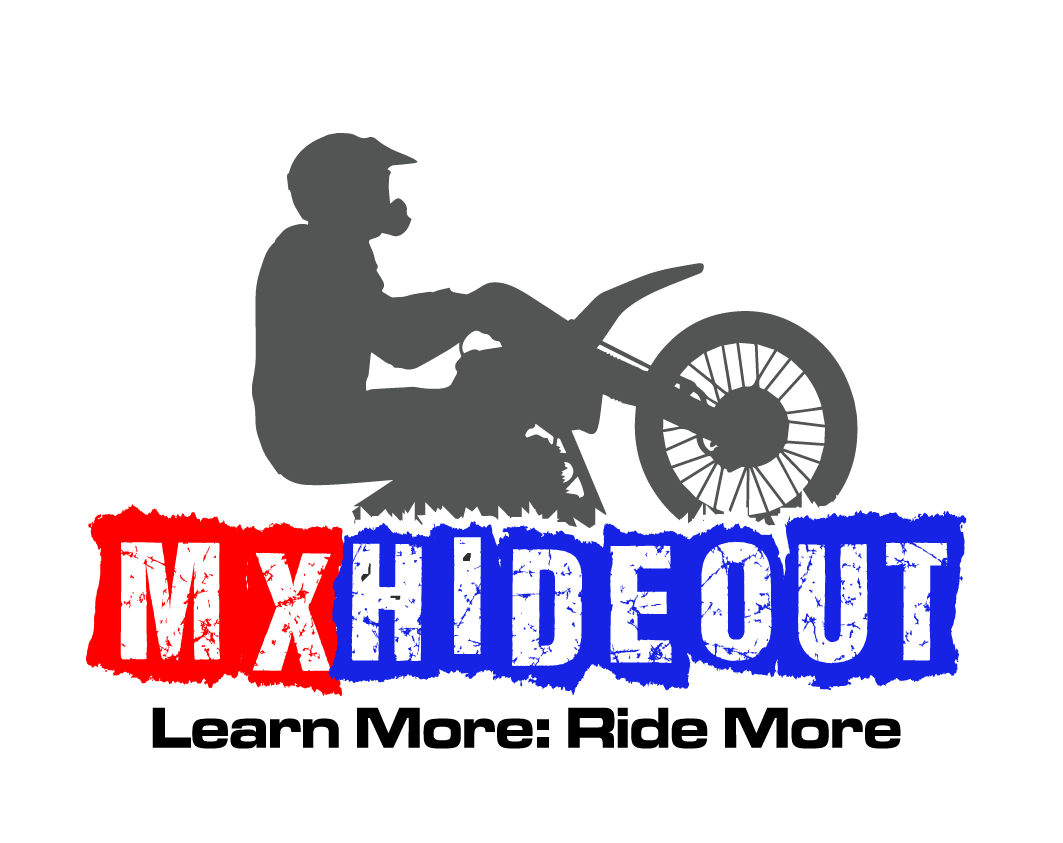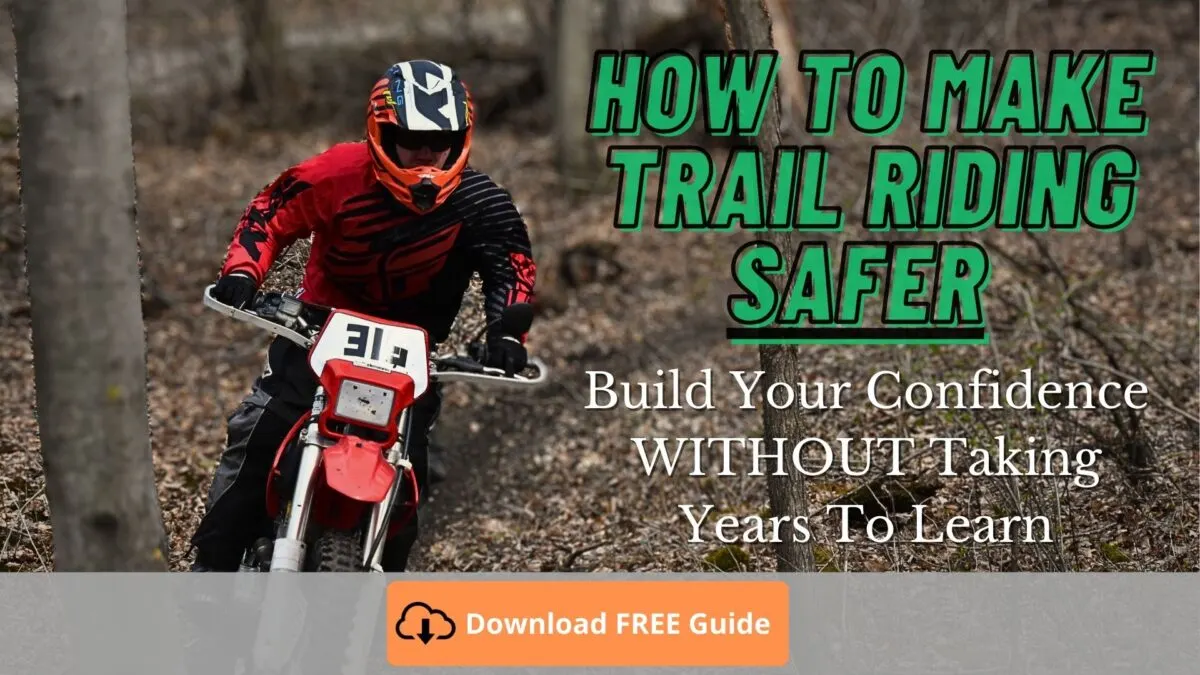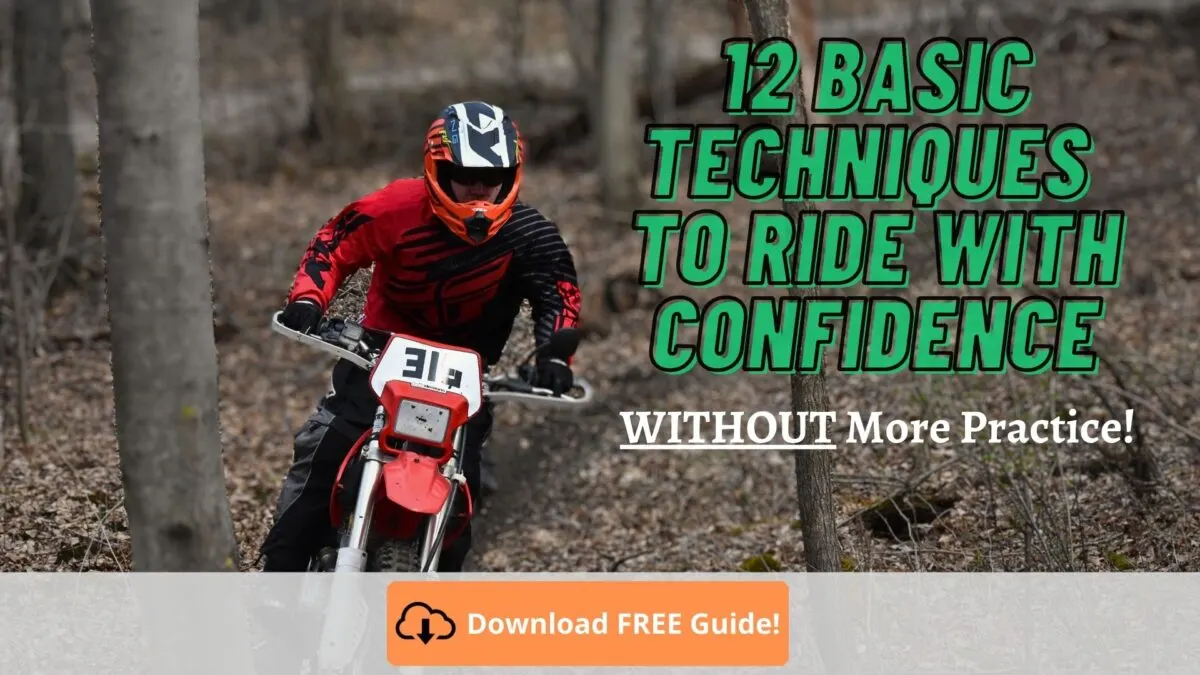What is the perfect amount of pressure for a dirt bike tire? That is a loaded question, because the perfect PSI for one bike can be different for someone else riding a similar bike.
That may not seem logical, but there’s a whole lot more than just finding the right PSI (pounds per square inch) number and sticking with it.
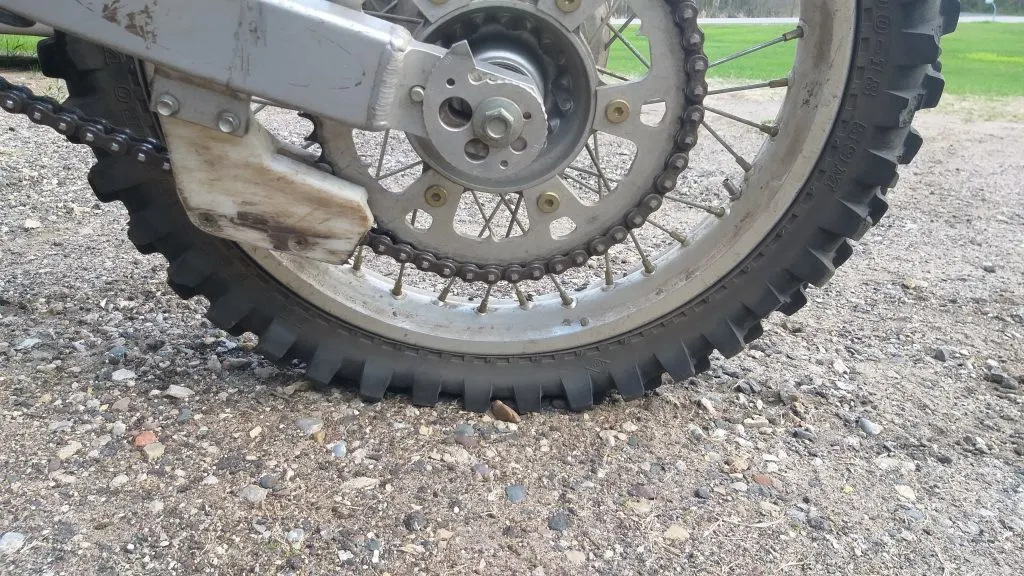
Most experienced dirt bike riders know that riding on hard terrain, such as rocks or clay, requires a higher tire pressure to prevent flats. Why is that? The best tire pressure might actually be lower than a softer terrain.
There’s many variables that need to be considered, so let’s look at all the different aspects of changing your dirt bike’s tire pressure and the reasoning why.
Why Do I Need To Check My Tire Pressure?
For obvious reasons, if you never check your tire pressure it could go flat. Or if you pumped it up too high then you’re missing out on better traction. But there’s way more to your benefits than just that.
Prevent Problems While Riding
Have you gotten to the track or trails, unloaded everything and found that your dirt bike has a flat tire? It’s just the worst feeling because you wasted all that time preparing and driving to get there. If you happen to have a spare and tools to change a tube then your day might not be gone, but you’ll miss out on priceless riding time.
Always check your bikes tire pressure before leaving home so you don’t miss out on seat time.
Ride Faster
Tuning the front and rear tire pressure to within half of one PSI can make a difference in your riding. It may not seem like much, but if you simply adjust the pressure to a specific number every time you ride, you’ll start to feel differences when it goes up or down.
Adjusting the pressure to what is most comfortable for you can make a big impact on your riding. Everyone wants to get faster, but what’s the quickest and easiest way to increase your speed without riding over your safe limits?
Traction Builds Confidence
Confidence is the key to learning how to ride better and faster. Even pro racers will agree that they can’t reach their full potential until they’re completely comfortable on their dirt bike.
With that said, setting the right tire pressure is not the only thing that will build confidence. It’s just a small piece to the puzzle, but having proper traction from both of your tires is an important part to riding.
When Should I Check Tire Pressure?
Air pressure in a dirt bike tire can be a finicky thing. Even if you check it before you leave to go to a local track or trail, there’s a good chance it changes by the time you’re riding.
To get the most accurate tire pressure reading, check it right before you ride, and after your first session/ride.
Air pressure in a tube changes with temperature, elevation, and humidity. As the temp rises, whether it’s air temp or heating up the tire from riding, the pressure in the tube will increase PSI.
As you go up in elevation the pressure will increase as well. These are just things to keep in mind and remember when you go ride. Just because the tires had good pressure yesterday doesn’t mean they’ll be the same today.
How To Check Proper Tire Pressure
In order to get an accurate tire pressure reading you need to have a quality tool. The timing is important for accuracy, as stated above, but checking it with a tool that isn’t consistent will not help you much.

A high quality pressure gauge that tests from 0-15 PSI is best because it’s accurate to less than 0.5 PSI. You shouldn’t need to go higher than 15 PSI for off-road riding, so why bother getting a gauge that is more difficult to read…
Do I Have To Buy A Nice Gauge?
Cheap tire pressure gauges can work well if they are consistent. As long as you are getting the same reading for the same amount of PSI every time then it’s good for measuring how much the pressure changes from day to day or hour to hour.
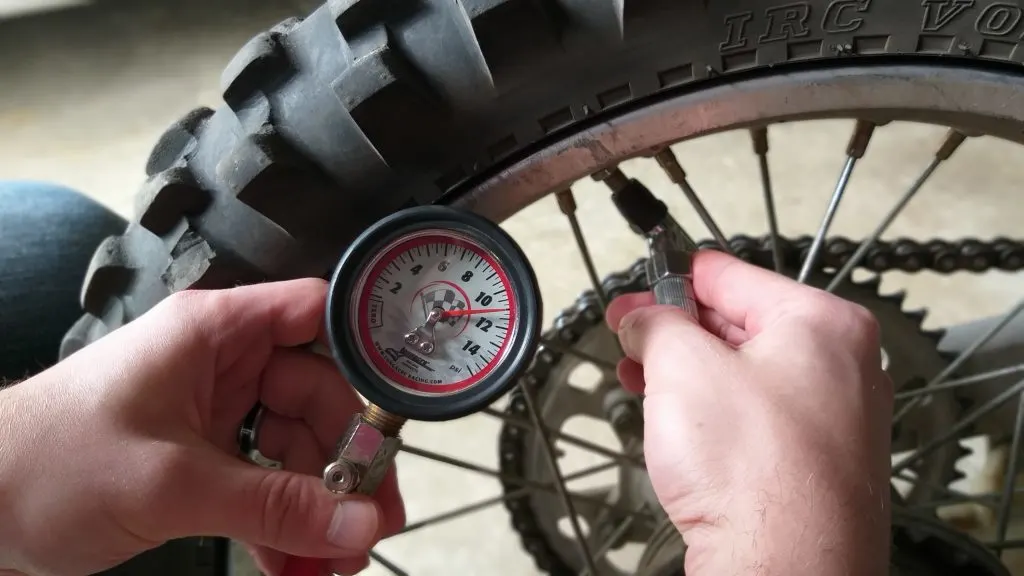
How To Put Air In A Dirt Bike Tire
Putting air in a tire or tube may seem like a simple task, but there’s multiple ways of doing it. Being at home with an air compressor is the easiest, but what if you’re out in the middle of nowhere? You can’t just blow it up to any usable pressure with your mouth and lungs.
If you transport your dirt bike somewhere to ride, it’s smart to bring a portable tool for pumping up tires. A tire may be going flat, you just had to replace a tube, or maybe you just feel safer adding a couple more PSI to prevent a flat.
Pumping Up At Your Vehicle/Camp
If you’re out at the track or trail, there’s a few different types of tools to pump up your tires. The most convenient is a portable air compressor.
One that you can just plug in to the cigarette lighter in your car or a 120v generator outlet. You can fill up your tires in seconds.
A large foot and hand pump used for bicycle tires is a cheap and easy way to pump up tires. You can throw it in with your gear and tools. This way you don’t even need electricity.
Adding Air On The Trail
Sometimes things happen and you need to take emergency action. A low or flat tire can ruin your day out on the trail, unless you can replace it and/or fill it back up. There’s a couple of simple and convenient ways to do that.
Simple Or Quick Fills
A small, portable hand pump is an excellent tool to have in your trail pack or fender bag. It’s what I use for long trail rides and riding trips because it’s small, effective, and reliable.
On the other hand, a pack of CO2 cartridges and a valve stem adapter are easily packable and will fill a tube quickly. They’re great if you need a higher air pressure, such as a tubeless tire setup, or if you have a street bike tire.
Proper Tire Pressure Variables
Getting the right tire pressure is the tricky part. While a general rule that 12 PSI is a good starting point, it’s not always the best tire pressure for all dirt bikes.
Riding rocky terrain you add more pressure to prevent getting a flat from hitting sharp rocks, right? Why not lower the pressure to get more traction on the technical terrain?
Factors That Affect Optimum Tire Pressure:
- Type of Soil/Terrain
- Rider Weight
- Bike Weight
- Tube Thickness
- Tire hardness
Type of Soil/Terrain
The type of terrain you’re riding is the most important factor to setting your tire pressure. Higher pressure is better for harder terrain, such as clay and hardpack. This is just a general case, but we’ll cover how you can lower the pressure for a harder terrain in a minute.
14-15 PSI is a good starting point for tire pressure on hard dirt. You can generally get away with 1-2 PSI less in the rear tire since the knobs are bigger and stronger.
Rider & Bike Weight
Air pressure in a tube holds the bike up from the force that is pushing it down due to gravity. Cars need higher tire pressure because they are heavier. The same goes for bikes, although it’s a marginal, yet noticeable difference.
A dirt bike and rider that weigh a combined 100lbs more than a similar bike will need more pressure to hold it up and prevent flats.
Tube Thickness
Dirt bikes come with a standard tube thickness of about 1.5mm (.060”). Tire pressure charts are usually set off of a standard tube thickness.
However, if you go with a thicker tube, you can effectively lower the PSI to get the same protection while having a softer ride that gives you more traction and confidence.
The Hack To Get More Traction
Riding with a thicker tube is a common trick that many hardcore trail riders have used for years to get better traction in rocky or slippery conditions.
You can get away with running 6-8PSI in rocky terrain with an ultra heavy duty tube because the extra tube thickness is strong enough to prevent flats. In fact, you’ll most likely get less flats with this setup than with a standard tube thickness at 12-15PSI.
The drawback to the heavier duty tube is that it adds unsprung mass/weight to your wheels. Acceleration/braking and handling may be noticeably slower, but for the average rider the benefits may outweigh the negatives.
Tire Hardness
Lastly, the hardness and size of rubber knobs on your tires will affect how much pressure you should have.
A hard tire with many, large knobs can be run at a slightly lower pressure since it will resist being compressed more than a softer tire with less/smaller knobs.
How To Prevent Flats
Flat tires really suck the fun out of riding. There are some ways to help prevent them so your day isn’t ruined.
Keep Your Rims Locked
Make sure that you have rim locks on both wheels and that they are tight. A rim lock prevents the tire from spinning on the rim.
If the tire moves, it will usually take the tube with it. This will cause the valve stem to get pulled away from the hole and eventually tear off the tube.
Check/Add More Pressure
There’s so many things to check on your dirt bike before riding that could fail or cause a problem. Simply checking the tire pressure before each ride can save yourself from getting a flat.
Depending on how much PSI you already have in the tires, adding another 1-2 PSI can help prevent the tube getting pinched from the tire on hard impacts.
Use Nitrogen
Pumping up tubes with compressed air is not consistent because you get all of the other elements that are in the air; one of them being the moisture.
Simply changing over to nitrogen filled tubes will make the pressure more consistent and stable throughout the day and year.
Heavy Duty Tubes To The Rescue
Last, but not least, a heavy duty tube will certainly reduce the chance of getting a flat tire. Thicker rubber can take harder hits and will hold the tire and bike up better. A heavy duty tube is up to 2-3 times thicker than a standard stock tube.
Mousse Bibs
How would you like to never have a flat tire, period? Mousse bibs are the only way to make that happen, as it’s basically a hard foam donut that fits in place of the inner tube.
Mousse bibs are more expensive and need to be replaced every year or when they wear out. Cost vs benefit; is it worth it to you? They have about the same feel as 12 PSI would with an inner tube, so there’s no changing pressure.
Tubeless
Going with a tubliss tire setup is another way to get rid of conventional inner tubes. Really low tire pressures are possible, so this is a good option if you’re an off-road rider.
The kits cost at least as much as a new tire, and it requires more frequent checking to keep the inner seal tube inflated to the high pressure it needs.
How To Increase Traction
Very rarely will you want less traction while riding a dirt bike. The best ways to get more traction are to lower the air pressure in the tires, use a tire with a softer compound of rubber, or replace the tire if it’s old or worn.
